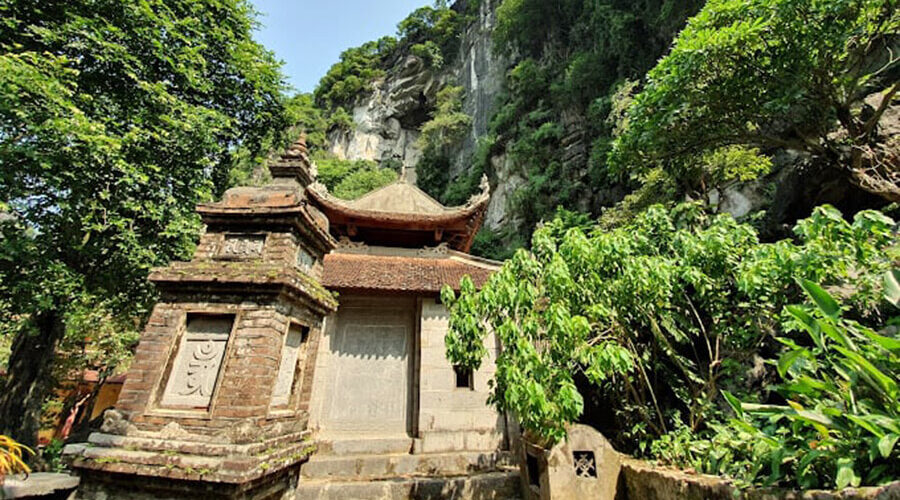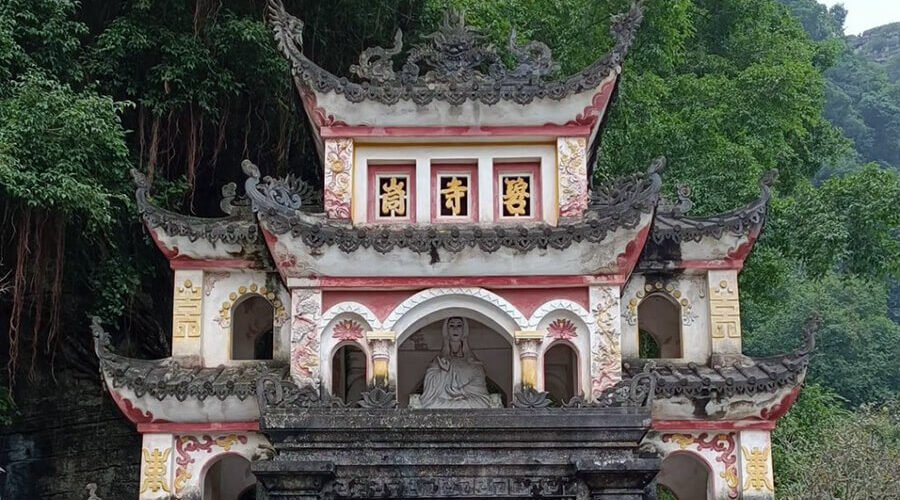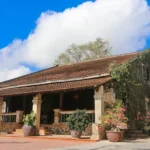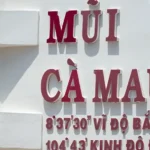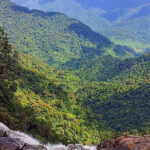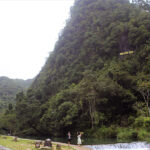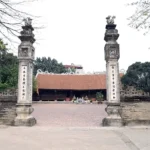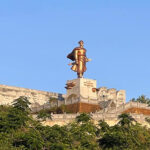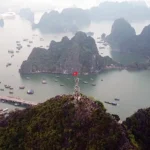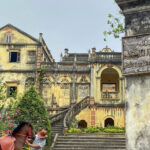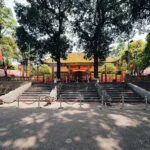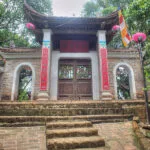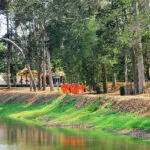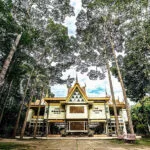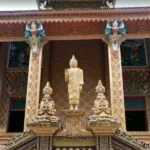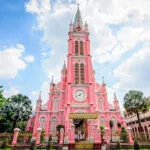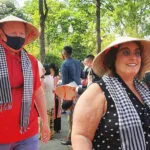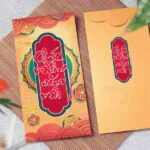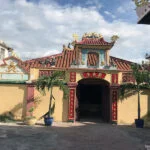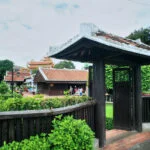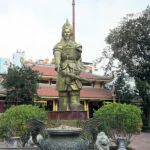Bich Dong Pagoda is an ancient pagoda belonging to the Trang An scenic complex which has been ranked as a special national monument and recognized by UNESCO as a world heritage site in 2014. Along with Tam Coc, Bich Dong Pagoda has created a beautiful miracle, combining nature and human to create a unique architectural complex, imbued with traditional Vietnamese culture.
The second most beautiful cave in the Vietnam
Bich Dong Pagoda is located at the foot of Thai Vien Mountain, Ninh Hai Commune, Hoa Lu District, Ninh Binh Province. The original name was “Bạch Ngọc Thạch Sơn Đồng”, meaning a beautiful and pure stone pagoda like jade in a remote mountain.

Bich Dong Pagoda has become an attractive destination for domestic and foreign tourists. Standing out with its unique architecture and prime location, no other place has the same terrain and mountain, Bich Dong is known as “the second most beautiful cave in the Vietnam”, ranked second after Huong Tich Cave – the Bodhisattva Avalokitesvara’s dojo in Vietnam. This pagoda was built on a mountain, with lush green trees, and the mossy tiled roofs of the ancient pagoda can be seen faintly.

According to history, Bich Dong Pagoda was established in 1428 and was just a small pagoda on the top of the mountain. However, in 1705, two monks Tri Kien and Tri The met and became sworn brothers. Both monks were devout and vowed to travel to many places together to spread Buddhism and build pagodas. Seeing that Bich Dong had a beautiful location and already had a pagoda, the two monks decided to stop and renovate the old pagoda.
In 1707, the two monks cast a large bell, which still hangs in Dong Toi today. Two years later, in August, the two monks wrote a stele inscription for Bich Dong Pagoda in Chinese characters.
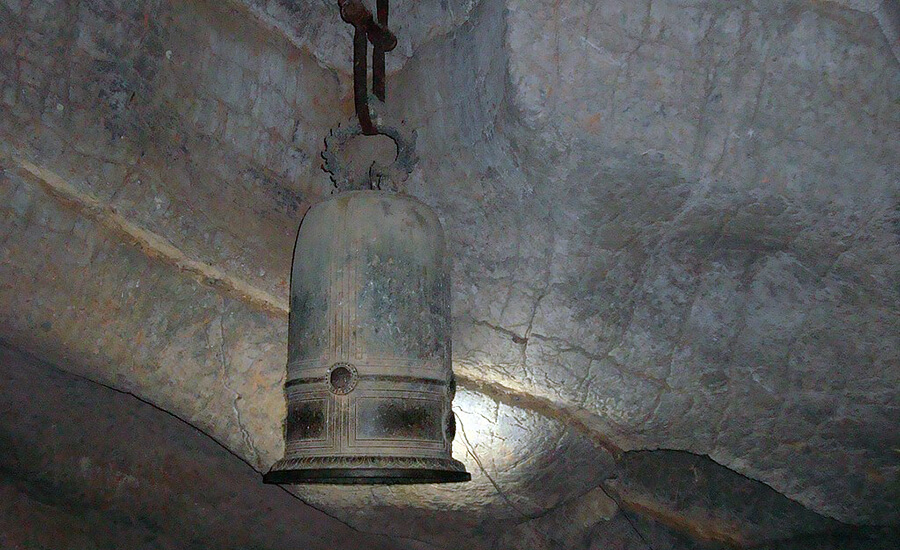
In 1774, Lord Trinh Sam came here to visit. Impressed by the panoramic view of the mountains, caves, rivers, fields and green trees, the pagoda seems to converge on a cool green background, Lord Trinh Sam named this pagoda Bich Dong Pagoda.
Architecture bearing the sacred soul of the nation
Bich Dong Pagoda was built in the early Le Dynasty on a large scale. The pagoda still preserves a large bell cast during the reign of Emperor Le Thai To (1428 – 1433) and has towers to enshrine the relics of monks who contributed to the construction of the pagoda.

During the Canh Hung Dynasty (1740 – 1786), the pagoda was renovated and expanded to include Ha, Trung and Thuong shrine, forming three separate shrines leaning against the mountainside.
They pagoda were built of ironwood, the roof were covered with tiles without joints, rounded tips, the corners of the roof all have curved edges or like the shape of a phoenix’s tail, winding and graceful like tidal waves.

In which, Ha shrine has 5 compartments built on a high foundation, showing the sophistication and creativity of the architects of that time. The rafters, crossbeams, and longitudinal beams are also made of ironwood. The roof is 2 floors with 8 curved roofs. The stone pillars in Ha shrine are all made of solid stone, not joined, and are more than 4m high.

From Ha shrine, climb 120 steps along the S-shaped path to the middle of Ngu Nhac Mountain Range to Trung shrine. Right in front are the two words Bich Dong carved into the cliff. This is a very unique pagoda, rarely found anywhere, half attached to a cave, half open-air, the pagoda has 3 Buddha worshiping rooms.
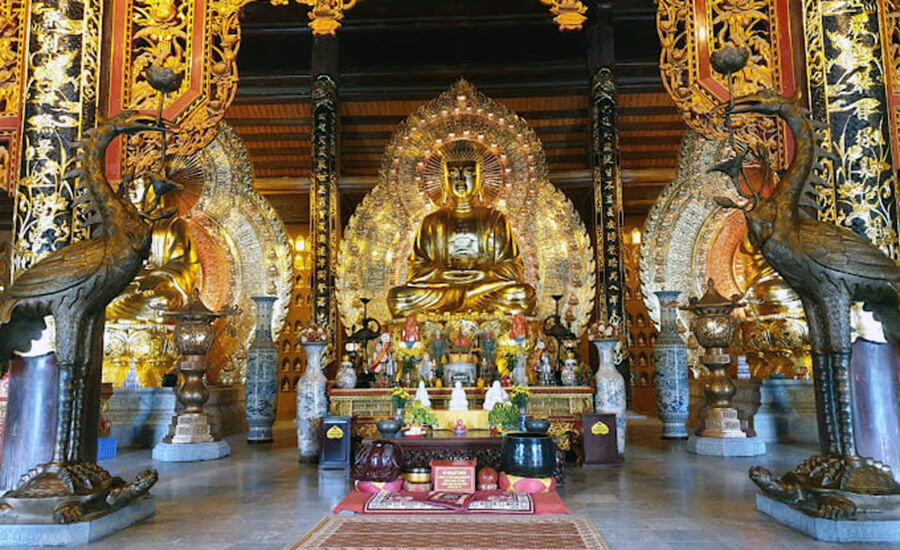
After worshiping Buddha at the Upper Room, climb 21 stone steps to reach the Dark Cave. Right in front of the cave entrance, there is an ancient bronze bell with very delicate carvings. This is the main cave, solemn, quiet, nature has painstakingly polished for generations, extremely delicate and sharp down to every small detail to create fairies, young boys, gliding dragons, swimming turtles, elephants, lying tigers…
The statue of Buddha Sakyamuni in Trung shrine has nine dragons floating on the roof, the two statues outside are Manjushri Bodhisattva, on the left is Samantabhadra Bodhisattva, inside the main hall is the statue of Venerable Ananda.

To go up to Thuong shrine, visitors have to climb 40 more stone steps along the mountainside. Thuong shrine is also called Dong Pagoda, the pagoda worships Avalokitesvara.

Standing at Thuong shrine, you can see the whole beautiful scenery of Bich Dong, as well as the mountains and rivers of Ninh Binh. From the pagoda, looking far away, there are 5 mountains that look like 5 lotus petals, Ngu Nhac Son, including Tam Sang, Gia Dinh, Con Lon, Dau Cau and Hang Dua mountains.

Admiring the wild and peaceful beauty of this pagoda, it is not difficult to understand why many visitors want to visit to find peace in modern life. If you have the opportunity to visit Ninh Binh, do not forget to stop by Bich Dong Pagoda to feel the serenity and peace of this pagoda. Surely you will have a wonderful experience when exploring the beauty of this unique pagoda.
Source: collected by An
Follow us for the best deal with Vietnam package tours and visa services!

